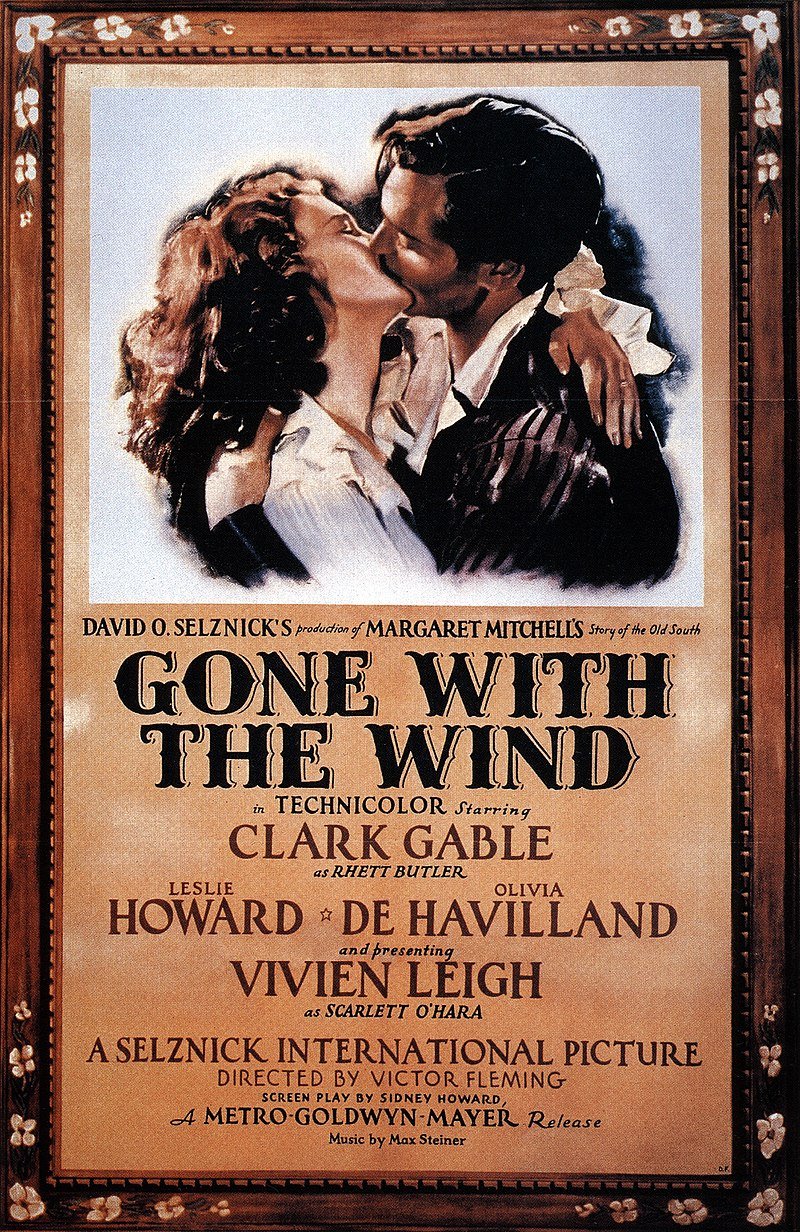On December 15, 1939, the highly anticipated film ‘Gone with the Wind’ had its premiere in Atlanta, Georgia. This epic historical romance, adapted from Margaret Mitchell’s novel, would go on to become one of the most celebrated films in history. With its captivating story set during the American Civil War, ‘Gone with the Wind’ captivated audiences with its stunning production values, compelling narrative, and unforgettable performances.
The film, directed by Victor Fleming, starred Vivien Leigh as the headstrong Scarlett O’Hara and Clark Gable as the dashing Rhett Butler. Their on-screen chemistry and remarkable performances brought the characters to life, leaving a lasting impression on viewers. Leigh’s portrayal of Scarlett O’Hara earned her an Academy Award for Best Actress, solidifying her place in Hollywood history.
However, the journey to bring ‘Gone with the Wind’ to the big screen was not without its challenges. The production faced numerous obstacles, including casting difficulties, script rewrites, and the need to create elaborate sets that accurately depicted the era. Despite these hurdles, the filmmakers persevered, determined to create a cinematic masterpiece.
The premiere of ‘Gone with the Wind’ was a star-studded affair, with celebrities and dignitaries from around the world in attendance. The film garnered critical acclaim and quickly became a box office sensation, grossing over $390 million worldwide, an astounding sum for the time.
One of the reasons for the film’s success was its groundbreaking use of Technicolor, a revolutionary color film process. The vibrant and lush visuals brought the story to life, immersing viewers in the rich landscapes of the American South. The film’s breathtaking cinematography, combined with its sweeping score and meticulous attention to detail, created an immersive experience that transported audiences to another time and place.
‘Gone with the Wind’ was not only a commercial success but also a critical triumph. It received thirteen Academy Award nominations and won eight, including Best Picture, Best Director, and Best Supporting Actress for Hattie McDaniel, who became the first African American to win an Oscar.
The film’s impact on popular culture cannot be overstated. It introduced iconic lines such as “Frankly, my dear, I don’t give a damn” and “Tomorrow is another day,” which have become ingrained in the collective consciousness. The characters of Scarlett O’Hara and Rhett Butler have become cultural icons, representing the complexities of love and desire.
Over the years, ‘Gone with the Wind’ has faced criticism for its portrayal of race and its romanticized depiction of the Antebellum South. It is important to view the film through the lens of its time and acknowledge the progress that has been made in the representation of marginalized communities in cinema.
Despite the controversy, the legacy of ‘Gone with the Wind’ endures. It remains a testament to the power of storytelling and the impact that a single film can have on popular culture. Its influence can be seen in subsequent historical epics, such as ‘Titanic’ and ‘Braveheart,’ which draw inspiration from its grand scale and emotional resonance.
The premiere of ‘Gone with the Wind’ on December 15, 1939, marked a significant moment in cinematic history. It showcased the possibilities of filmmaking and set a new standard for epic storytelling. The film’s enduring popularity is a testament to its timeless appeal and its ability to captivate audiences across generations.
SEO Excerpt:
On December 15, 1939, the film ‘Gone with the Wind’ premiered in Atlanta, Georgia. Adapted from Margaret Mitchell’s novel, this epic historical romance set during the American Civil War became one of the most celebrated films in history. It won multiple Academy Awards and is renowned for its production values, narrative, and performances, especially by Vivien Leigh and Clark Gable. The film’s influence on cinema and popular culture has been profound and enduring.
References:
- IMDb – Gone with the Wind (1939)
- Britannica – Gone with the Wind (Film, 1939)
- History.com – Gone with the Wind

